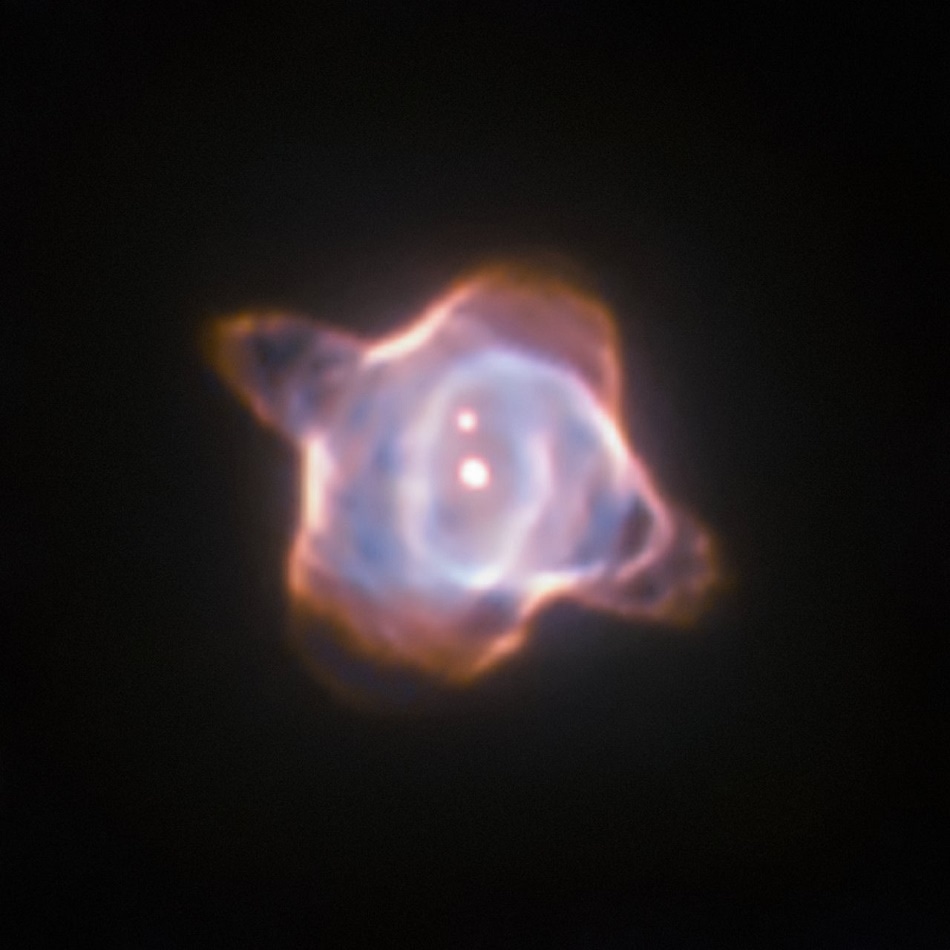Sep 14 2016
 Image Credit: Space Telescope
Image Credit: Space Telescope
A team of astronomers have studied stellar evolution in real time using Hubble. The temperature of the star SAO 244567 has greatly increased over the last three decades. Currently, this star is cooling again, as it has been reborn into a former phase of stellar evolution. This is the first reborn star that has been observed during its heating and cooling stages of rebirth.
Even though the Universe is continually evolving, most of the processes are very slow to be observed within the lifespan of a human. But now this team of astronomers has achieved an exception to this rule.
SAO 244567 is one of the rare examples of a star that allows us to witness stellar evolution in real time. Over only twenty years the star has doubled its temperature and it was possible to watch the star ionising its previously ejected envelope, which is now known as the Stingray Nebula.
Nicole Reindl, University of Leicester
SAO 244567, is 2700 light-years from Earth, and is the central star of the Stingray Nebula. It has been noticeably evolving between observations spanning about 45 years. Between 1971 and 2002, the star’s surface temperature shot up by roughly 40,000°C. Recently, new observations made using the cosmic origins spectrograph (COS) on the NASA/ESA Hubble Space Telescope have shown that SAO 244567 has begun to cool and expand.
This is quite extraordinary. The quick heating could readily be explained if one assumed that SAO 244567 had an original mass of three to four times the mass of the Sun. However, the data reveals that SAO 244567 must have had an initial mass similar to that of the Sun. Typically these types of low-mass stars change on extended timescales; therefore the rapid heating has remained a mystery for many years.
In 2014, Reindl and her team came up with a theory that resolved the issue of both SAO 244567’s speedy increase in temperature and the low mass of the star. They recommended that the heating was a result of a helium-shell flash event: a short ignition of helium outside the stellar core.
This theory has very comprehensible implications for the future of SAO 244567 - if it has really experienced such a flash, then this would cause the central star to start to expand and cool again and return to the former phase of its evolution. This is precisely what the new observations established.
The release of nuclear energy by the flash forces the already very compact star to expand back to giant dimensions - the born-again scenario.
Nicole Reindl, University of Leicester
It is not the sole instance of such a star, but this is the first time ever a star has been observed during both the heating and cooling stages of such a change.
So far none of the existing stellar evolutionary models can completely explain SAO 244567’s behavior.
We need refined calculations to explain some still mysterious details in the behaviour of SAO 244567. These could not only help us to better understand the star itself but could also provide a deeper insight in the evolution of central stars of planetary nebulae.
Nicole Reindl, University of Leicester
Until astronomers build more advanced models for the life cycles of stars, certain characteristics of SAO 244567’s evolution will continue to be a mystery.